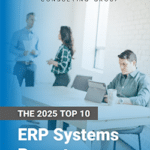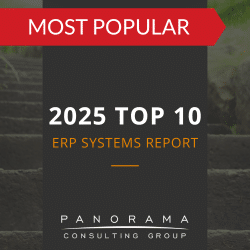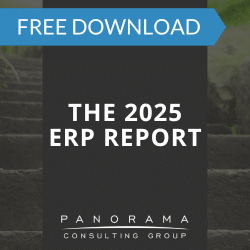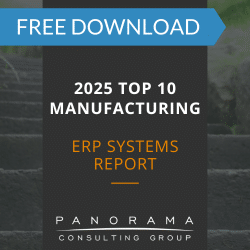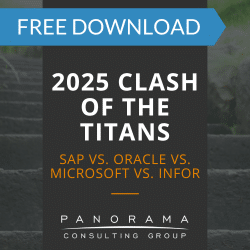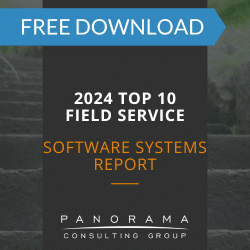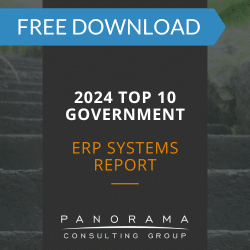- Employee engagement during ERP implementation often determines the long-term success of phased rollout strategies.
- Phased ERP deployment introduces distinct user adoption challenges compared to big-bang implementations, particularly around timing and consistency.
- Common risks to engagement include tool fatigue, fragmented departmental experiences, and user disengagement in later rollout phases.
- Higher user adoption in phased ERP deployment is achievable when engagement approaches are aligned with the nuances of each phase.
In a time defined by hybrid work, record-high burnout, and persistent turnover, CEOs face a sobering reality: employee loyalty is fragile, and engagement is transactional.
Simultaneously, companies are doubling down on phased ERP rollout strategies for the sake of flexibility and risk management.
Unfortunately, phased implementations stretch timelines and attention spans. The longer the transformation drags on, the easier it becomes for employees to disengage, adopt bad habits, and revert to legacy processes.
Maintaining employee engagement during ERP implementation, especially one that unfolds in stages, is an executive imperative. Today, we’re outlining how to lead this effort, and explaining why user adoption in phased ERP deployment hinges on tailored engagement strategies.
ERP Training Plan Success Story
We helped this manufacturer implement an ERP training strategy to increase user adoption of its new ERP system.
Phased Rollouts Create a Different Kind of Engagement Risk
A phased ERP rollout distributes changes over time, rather than introducing them all at once like in a big-bang deployment.
While this may reduce operational risk, it can create a fragmented employee experience. As small subsets of the organization begin using the new system, stories of technical glitches and unmet expectations can circulate, setting the tone for later stages.
For example, rolling out a manufacturing ERP system in shop floor operations during Q1 and extending it to quality control and procurement during Q3 can lead to duplicated work, missed handoffs, and doubts about the system’s ability to support end-to-end production traceability.
The challenge intensifies when momentum dips between phases or when early adopters struggle publicly. Your team starts asking: Is this really better?
Common employee engagement challenges during phased implementation include:
- Momentum Loss Between Phases – When the first phase of an ERP rollout ends, the adrenaline may fade. Without an effective user engagement strategy, your team’s enthusiasm may fade too.
- Inconsistent Experiences Across Departments – In many phased rollouts, some departments operate in the new system while others stay temporarily in the old one. This leads to disconnects between teams in how they communicate, share information, and make data-driven decisions.
- Tool Fatigue and Shadow Systems – Because new modules are often introduced gradually in a phased rollout, gaps often emerge between what the system can currently support and the tasks employees need to perform. As a result, employees are more likely to fall back on familiar workarounds or adopt shadow IT.
- Emotional Disengagement of Late-Phase Users – Employees assigned to later rollout stages often spend months watching other teams transition before they’re directly involved. This extended waiting period can leave them feeling disconnected from the process—like change is happening to them rather than with them.
- Skepticism Fueled by Early-Phase Struggles – If the first go-live is rocky, it can sour perception across the organization. In future phases, employees may begin to doubt whether the system will meet their needs or if the rollout timeline will hold.
Building an Engagement Strategy That Evolves With Your Rollout
User adoption in phased ERP deployment tends to increase when engagement is treated as a core capability. This means employing targeted engagement strategies throughout each phase, tailoring your approach based on organizational readiness, cultural dynamics, and lessons learned in earlier phases.
Here are four ways to build and maintain employee engagement so it becomes something you can monitor, improve, and connect directly to user adoption.
1. Focus on Role-Based Engagement
Frontline teams, department heads, and technical staff all approach the system with different expectations—and those differences often widen in phased ERP rollouts.
Our ERP implementation consultants often recommend tailoring communication strategies to the day-to-day realities of each user group. When users see how ERP functionality connects to their unique responsibilities, they’re more likely to understand its value and engage with the rollout.
2. Link ERP Milestones to Broader Strategic Objectives
When ERP adoption is seen as a means to a strategic end, it tends to attract more consistent support.
Phased rollouts present multiple opportunities to connect specific phases with broader company goals, whether it’s increasing agility across business units or empowering frontline teams with real-time tools.
For example, a logistics company might implement a supply chain management system gradually across multiple locations, while emphasizing how the system will enable same-day inventory tracking and improve on-time delivery rates. This not only boosts engagement but aligns ERP adoption with customer satisfaction targets.
3. Build Shared Ownership
Participating in storytelling, shared retrospectives, and informal knowledge-sharing forums, can help employees maintain energy across longer rollouts.
We recommend reinforcing engagement through low-friction, high-frequency touchpoints, such as spotlights on peer contributors or informal learning exchanges. These routines help foster a sense of belonging and momentum across departments and phases.
4. Position Super Users as Cultural Translators
Super users often play a decisive role in how ERP rollouts are received. When their influence extends beyond system guidance into cultural interpretation—explaining why changes matter—engagement tends to deepen.
In organizations where these individuals are given visibility, recognition, and decision-making opportunities, super users can act as accelerators of adoption. By translating executive intent into practical workflows and peer-level coaching, they provide reassurance and create a bridge between project leadership and the broader workforce.
Learn More About Sustaining Employee Engagement
Engagement is a performance driver. When users lean in, you reduce training costs, accelerate adoption, and shorten the time to value.
Most importantly, you build an internal culture of change readiness that carries into future initiatives.
Phased ERP deployment gives you multiple moments to reset and recalibrate. Are you using those moments to build a workforce that thrives through change—or merely survives it?
At Panorama Consulting, we’ve seen what works. Our independent ERP consultants have guided organizations through the sharp edges of multi-phase rollouts, and we can help your organization, too. Contact us below for a free ERP consultation.
